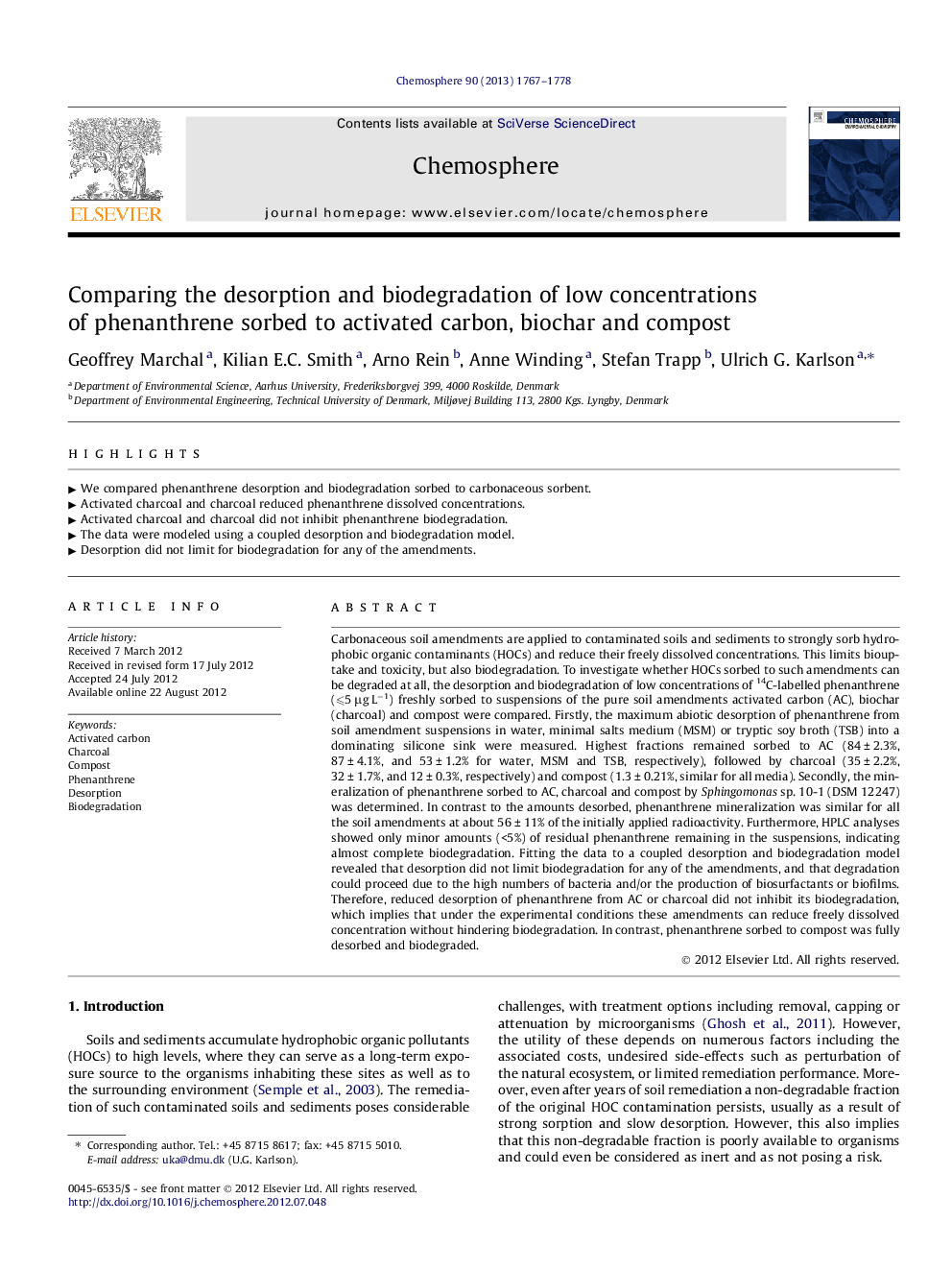| کد مقاله | کد نشریه | سال انتشار | مقاله انگلیسی | نسخه تمام متن |
|---|---|---|---|---|
| 6311071 | 1307499 | 2013 | 12 صفحه PDF | دانلود رایگان |
Carbonaceous soil amendments are applied to contaminated soils and sediments to strongly sorb hydrophobic organic contaminants (HOCs) and reduce their freely dissolved concentrations. This limits biouptake and toxicity, but also biodegradation. To investigate whether HOCs sorbed to such amendments can be degraded at all, the desorption and biodegradation of low concentrations of 14C-labelled phenanthrene (⩽5 μg Lâ1) freshly sorbed to suspensions of the pure soil amendments activated carbon (AC), biochar (charcoal) and compost were compared. Firstly, the maximum abiotic desorption of phenanthrene from soil amendment suspensions in water, minimal salts medium (MSM) or tryptic soy broth (TSB) into a dominating silicone sink were measured. Highest fractions remained sorbed to AC (84 ± 2.3%, 87 ± 4.1%, and 53 ± 1.2% for water, MSM and TSB, respectively), followed by charcoal (35 ± 2.2%, 32 ± 1.7%, and 12 ± 0.3%, respectively) and compost (1.3 ± 0.21%, similar for all media). Secondly, the mineralization of phenanthrene sorbed to AC, charcoal and compost by Sphingomonas sp. 10-1 (DSM 12247) was determined. In contrast to the amounts desorbed, phenanthrene mineralization was similar for all the soil amendments at about 56 ± 11% of the initially applied radioactivity. Furthermore, HPLC analyses showed only minor amounts (<5%) of residual phenanthrene remaining in the suspensions, indicating almost complete biodegradation. Fitting the data to a coupled desorption and biodegradation model revealed that desorption did not limit biodegradation for any of the amendments, and that degradation could proceed due to the high numbers of bacteria and/or the production of biosurfactants or biofilms. Therefore, reduced desorption of phenanthrene from AC or charcoal did not inhibit its biodegradation, which implies that under the experimental conditions these amendments can reduce freely dissolved concentration without hindering biodegradation. In contrast, phenanthrene sorbed to compost was fully desorbed and biodegraded.
⺠We compared phenanthrene desorption and biodegradation sorbed to carbonaceous sorbent. ⺠Activated charcoal and charcoal reduced phenanthrene dissolved concentrations. ⺠Activated charcoal and charcoal did not inhibit phenanthrene biodegradation. ⺠The data were modeled using a coupled desorption and biodegradation model. ⺠Desorption did not limit for biodegradation for any of the amendments.
Journal: Chemosphere - Volume 90, Issue 6, February 2013, Pages 1767-1778
